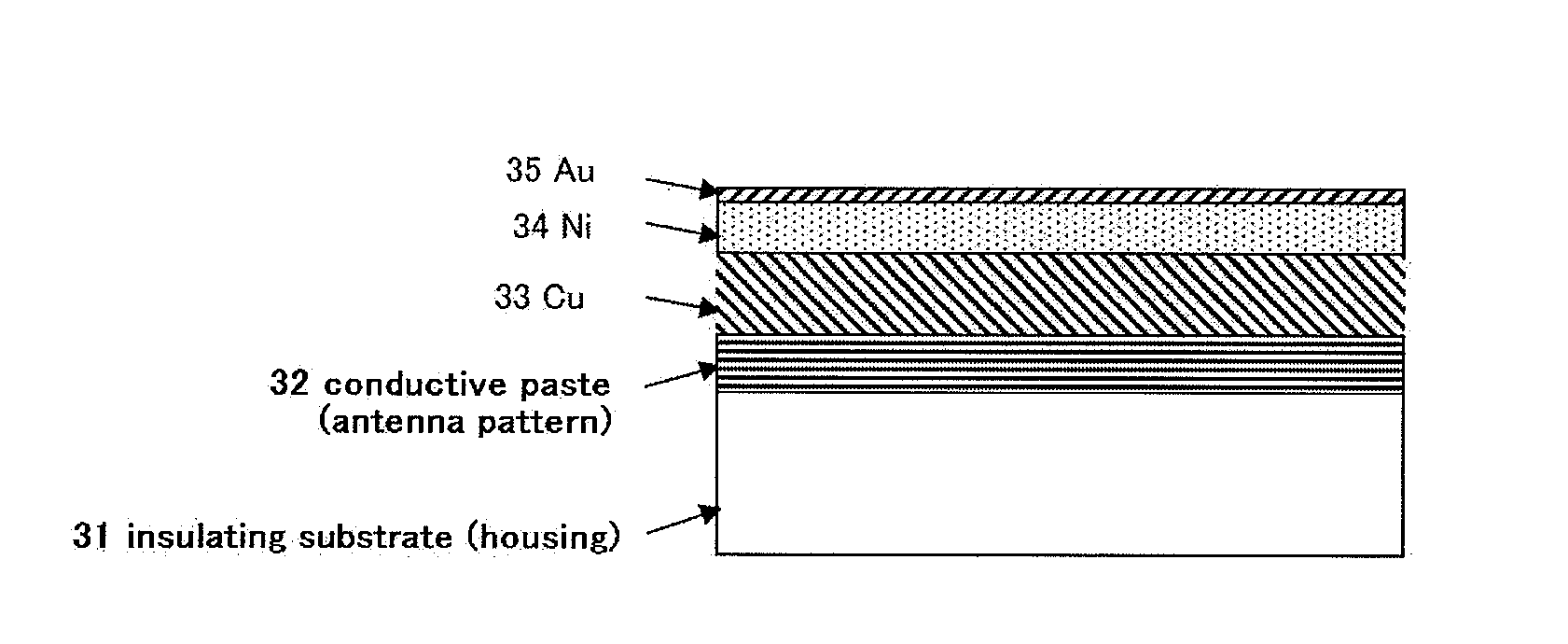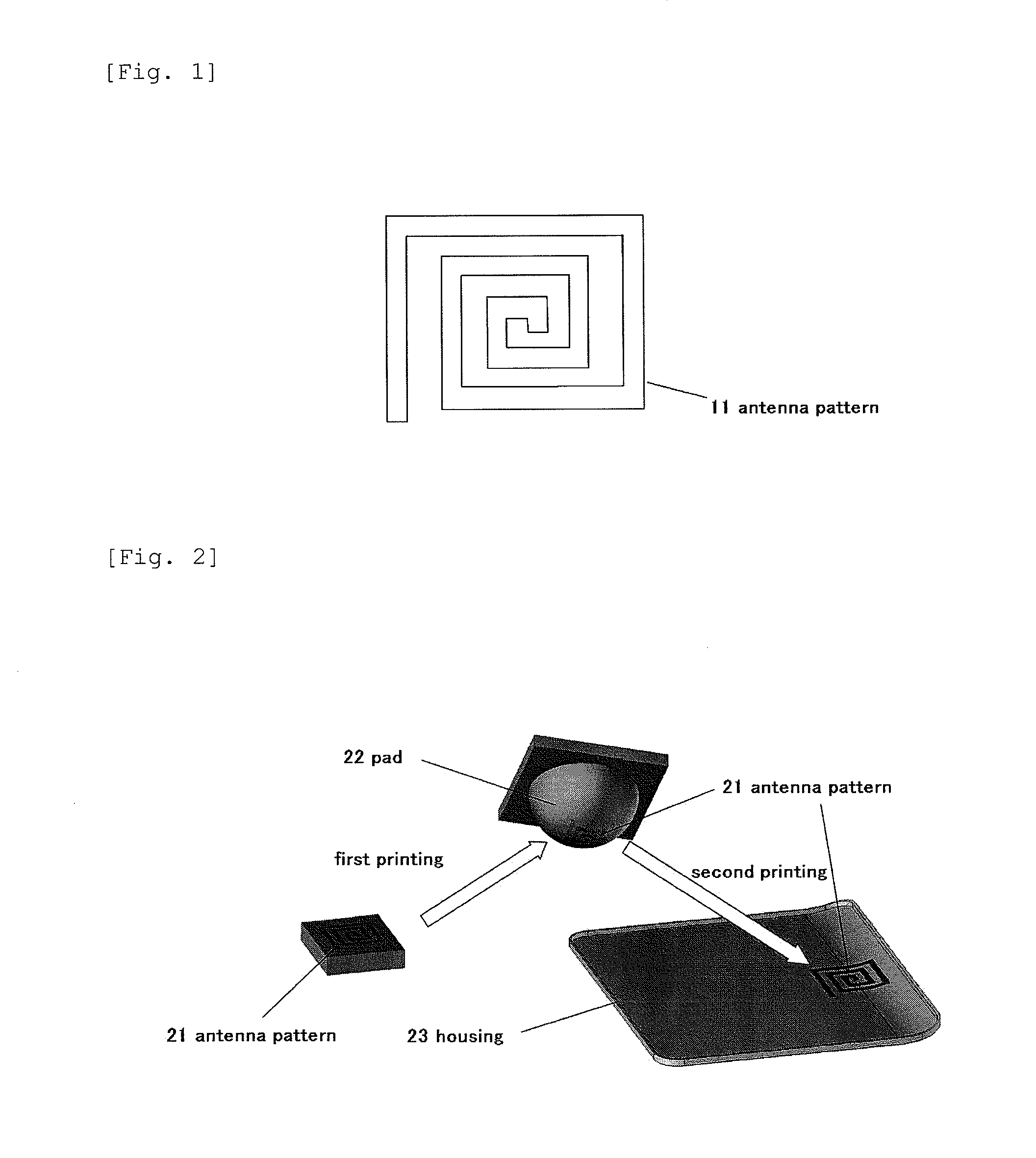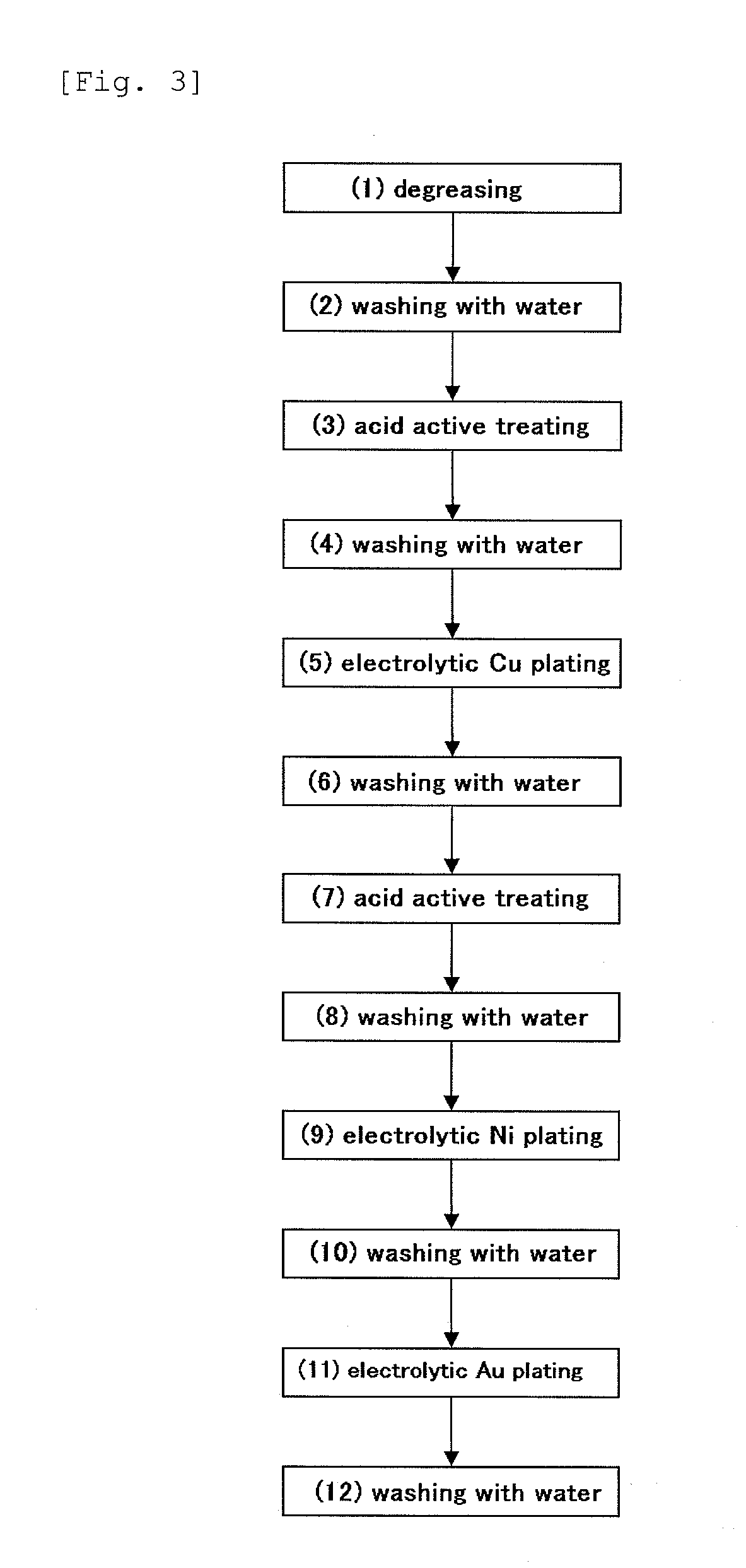Low-temperature curable conductive paste for plating and electric wiring using the same
a technology of conductive paste and electric wiring, which is applied in the direction of resistive material coating, non-conductive material with dispersed conductive material, inks, etc., can solve the problems of increasing production costs, increasing costs, and providing a poor degree of freedom in design
- Summary
- Abstract
- Description
- Claims
- Application Information
AI Technical Summary
Benefits of technology
Problems solved by technology
Method used
Image
Examples
synthesis example 1
Synthesis of Polyester Resin I
[0140]In the known polyester polymerization method, a reaction vessel was loaded with 238 parts by weight of terephthalic acid dimethyl ester, 238 parts by weight of isophthalic acid dimethyl ester, 9.6 parts by weight of trimellitic anhydride, 186 parts by weight of ethylene glycol, 208 parts by weight of 2,2-dimethyl-1,3-propanediol, and 0.17 part by weight of tetrabutyl titanate, and an ester exchange reaction was carried out at 180° C. to 230° C. for 8 hours. Subsequently, the pressure of this reaction system was reduced to 5 mmHg in 30 minutes, and the temperature was raised to 250° C. during this process. Further, a condensation polymerization reaction was carried out under 0.3 mmHg and at 250° C. for 30 minutes. The reduced viscosity of the obtained polyester was 0.61 dl / g. Next, nitrogen gas was introduced to this reaction system, and the reaction vessel was loaded with 399 parts by weight of ε-caprolactone. After the reaction system was homogen...
synthesis examples 2 to 5
Synthesis of Polyester Resins II to V
[0141]Polyester resins II to V were synthesized in the same manner as in the synthesis example 1. The composition and the physical properties of the polyester resins II to V are shown in Table 1.
synthesis example 6
Synthesis of Polyester Diol a
[0142]A reaction vessel equipped with a thermometer, a stirrer, and a Liebig cooling tube was loaded with 97 parts by weight of terephthalic acid dimethyl ester, 97 parts by weight of isophthalic acid dimethyl ester, 82 parts by weight of ethylene glycol, and 92 parts by weight of 2,2-dimethyl-1,3-propanediol, and further, 0.1 part by weight of tetrabutoxy titanate was added as a catalyst. The reaction was carried out under an ordinary pressure at 240° C. for about 4 hours, and the produced water was removed by distillation. Subsequently, the pressure was reduced at 245° C. for about 10 minutes, so as to end the reaction. The composition ratio (molar ratio) of the obtained polyesterdiol (a) was determined as terephthalic acid / isophthalic acid / ethylene glycol / / 2,2-dimethyl-1,3-propanediol=50 / 50 / / 43 / 57, and the hydroxyl value was 62 mgKOH / g. The composition and the physical properties of the polyester diol a are shown in Table 2.
PUM
| Property | Measurement | Unit |
|---|---|---|
| acid value | aaaaa | aaaaa |
| temperature | aaaaa | aaaaa |
| heat resistance | aaaaa | aaaaa |
Abstract
Description
Claims
Application Information
 Login to View More
Login to View More - R&D
- Intellectual Property
- Life Sciences
- Materials
- Tech Scout
- Unparalleled Data Quality
- Higher Quality Content
- 60% Fewer Hallucinations
Browse by: Latest US Patents, China's latest patents, Technical Efficacy Thesaurus, Application Domain, Technology Topic, Popular Technical Reports.
© 2025 PatSnap. All rights reserved.Legal|Privacy policy|Modern Slavery Act Transparency Statement|Sitemap|About US| Contact US: help@patsnap.com



